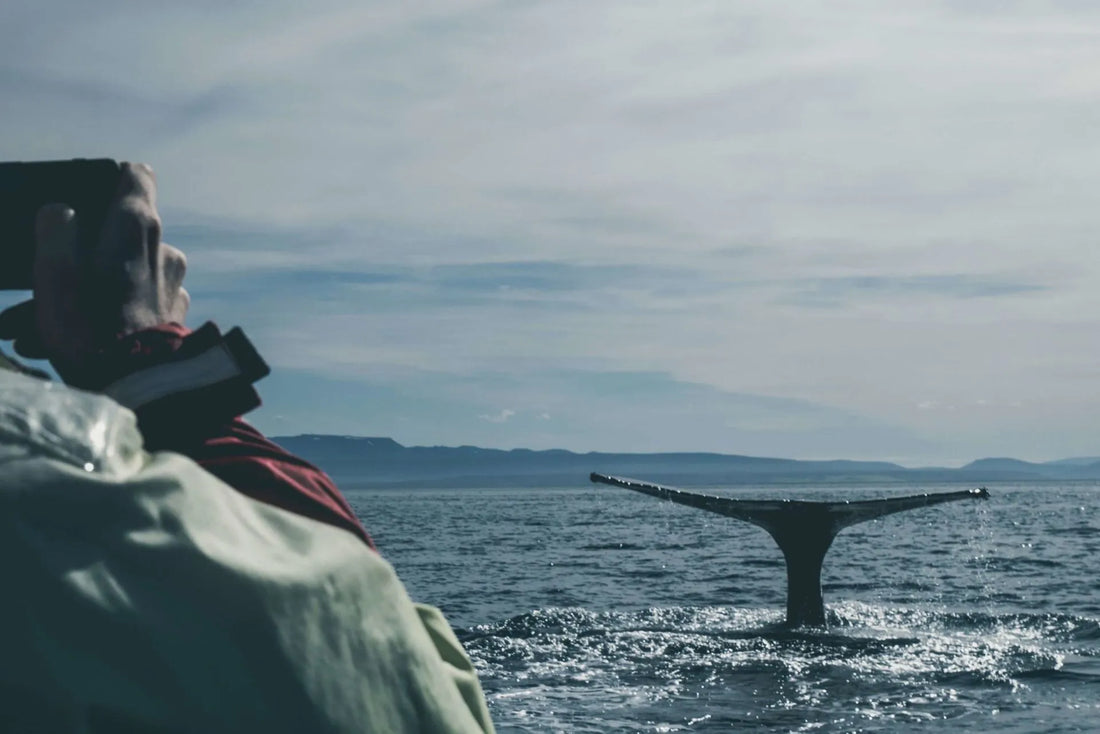
Are Whale Watching Tours Worth It?
Share
Every year, thousands of visitors to Hawaiʻi ask the same question: “Is whale watching really worth it?” Whether you’re planning your dream trip or just looking for something unforgettable to do while you’re here, heading out to see these giants of the sea is a once-in-a-lifetime experience for many.
At Surf N Sea on Oʻahu’s North Shore, we’ve been helping people connect with the ocean since 1965. Here’s everything you need to know about whale watching in Hawaiʻi—and how to decide if this ocean adventure is right for you.
What Is a Whale Watching Tour?
Whale watching is exactly what it sounds like: hopping on a boat and heading out to see wild whales in their natural habitat. In Hawaiʻi, these tours are especially popular in the winter months, when humpback whales migrate from Alaska to the warm, shallow waters of the islands to mate and give birth.
Guided by experienced captains and marine naturalists, these tours help you safely and respectfully observe whales up close—sometimes just yards from the boat. Seeing a 40-ton whale breach right in front of you is one of those moments you never forget.
Why Whale Watching Is Worth It
1. An Up-Close Encounter With Nature
Photos and videos can’t compare to seeing a whale in person. From tail slaps to full breaches, humpback whales put on an unforgettable show. It’s humbling, awe-inspiring, and often described as one of the most memorable moments of any Hawaiʻi vacation.
2. Learn While You Cruise
Most tours include narration from onboard guides who share fascinating facts about whale behavior, migration, and conservation. It’s an amazing way to learn more about Hawaiʻi’s marine life while enjoying a relaxing boat ride.
3. A Scenic and Peaceful Ocean Ride
Even if you’re not sure how excited you are about whales, the cruise itself is a highlight. The views of the coastline, the fresh ocean air, and the chance to spot dolphins, turtles, flying fish, or monk seals make it a relaxing, well-rounded experience.
A Few Things to Keep in Mind About Whale Watching Tours
1. Whale Sightings Aren’t Guaranteed
These are wild animals, and they don’t run on a schedule. While the chances are good during peak season, there’s always a small chance you won’t spot any whales. That said, most companies offer free return trips or credits if no whales are seen—just ask about their policies before booking.
2. Seasickness Happens (But It’s Manageable)
If you’re prone to motion sickness, take steps before your tour:
- Use motion-sickness wristbands or take a non-drowsy remedy
- Eat a light snack beforehand (avoid greasy food)
- Choose a larger, more stable boat
- Stay outside in the fresh air and keep your eyes on the horizon
Don’t let the fear of feeling queasy keep you from a once-in-a-lifetime experience.
3. Ocean Conditions Can Change
Some days are calm and sunny, while others might bring wind, rain, or choppy surf. Tours may be rescheduled for safety, so flexibility is key. Make sure to check your tour’s cancellation or rebooking policies before heading out.
When Is the Best Time for Whale Watching in Hawaiʻi?
The official whale watching season runs from November through May, with January to March being the best months for sightings.
During this time, humpbacks migrate over 3,000 miles to give birth and raise their calves in Hawaiʻi’s protected waters, part of the Hawaiian Islands Humpback Whale National Marine Sanctuary.
Tip: Morning tours often have calmer seas and better visibility.
Other Whale Species You Might See
While humpbacks are the stars of the season, you might also spot:
- Humpback Whales – These are the stars of whale watching season (Nov–May), especially seen from January to March.
- Pilot Whales – Often seen in deeper waters off the islands, usually in small groups.
- False Killer Whales – Less common, but do pass through Hawaiian waters and may occasionally be spotted.
- Melon-headed Whales – Seen infrequently, usually far offshore or mixed in with other species.
- Dolphins (like Spinner and Bottlenose) – Frequently seen during tours, often alongside boats.
Can You See Whales From Shore?
Yes, during peak season, you might see whales from coastal lookouts or beaches on Oʻahu’s North Shore, Maui’s west side, or Kauaʻi’s south shore. But from land, you’ll need binoculars and a bit of luck. From a boat, the views are closer, more exciting, and often come with expert guidance.
Is Whale Watching Good for Families?
Absolutely. Whale watching is a great experience for people of all ages—especially kids. It’s fun, interactive, and educational. Just be sure to choose a boat that fits your family’s comfort level. Some offer shaded seating, restrooms, and smoother rides, which can make a big difference for young children or older passengers.
Is It Worth It Whale Watching Worth It?
If you love wildlife, scenic views, or just want an unforgettable story to bring home, whale watching is absolutely worth it. It’s one of those rare activities that’s as exciting as it is peaceful, and it leaves you with a whole new respect for the ocean and its creatures.
Let Us Help You Plan Your Whale Watching Tour
At Surf N Sea, we’re here to help you get the most out of your time on Oʻahu. Whether you’re looking to book a whale watching tour, want tips on what to bring, or need help finding the best ocean activities, our team is happy to help.
